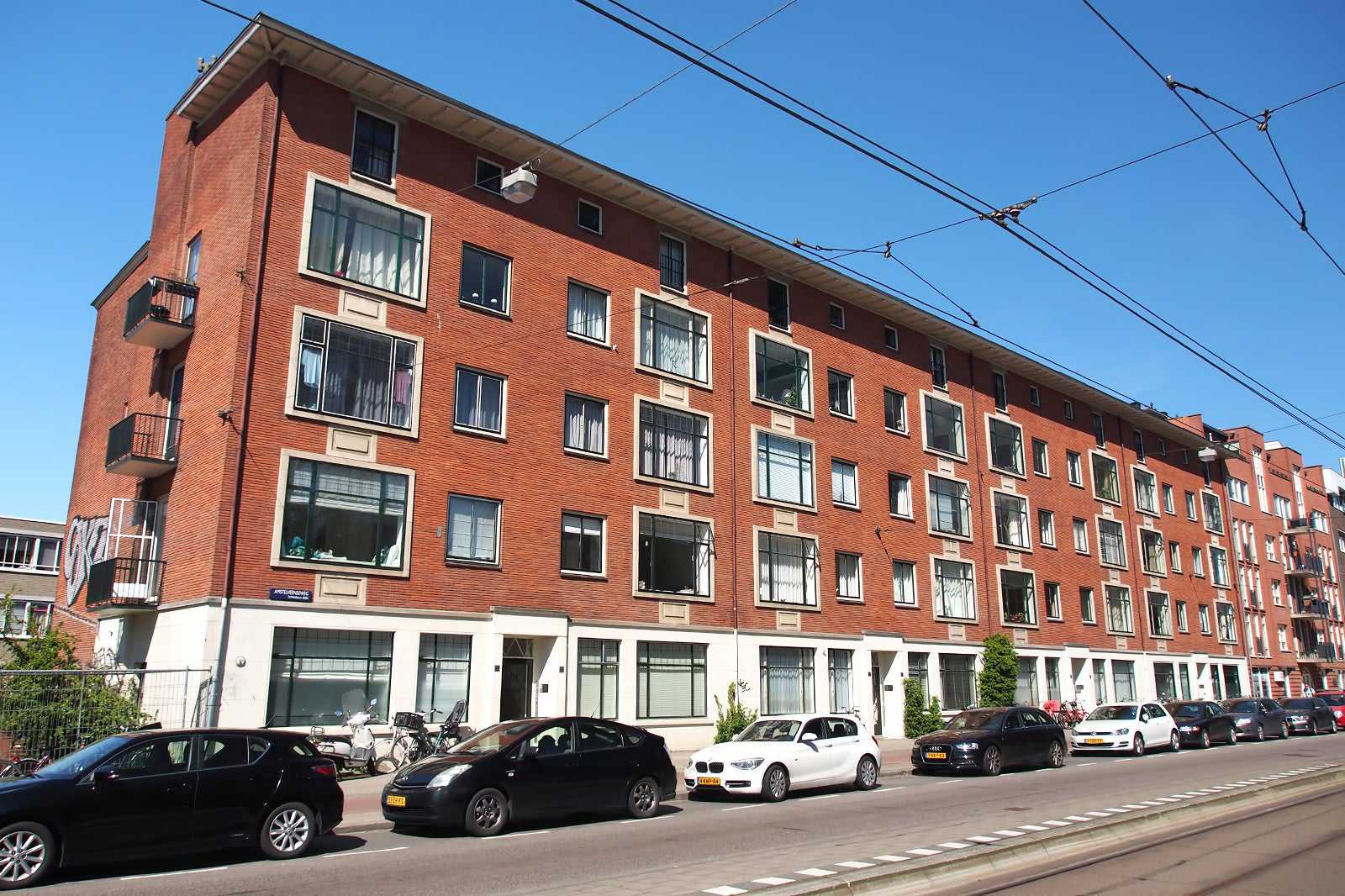Amstelveenseweg is a connecting street between the city of Amsterdam and the suburban areas of Amstelveen. It sits closer to the south of Amsterdam, beginning at Overtoomse Sluis all the way to Kalfjeslaan of Amstelveen. The 4.1-km-long throughway is popular for its vast selections of cafes, housing, national monuments, and public art project.
One of the entrances to Vondelpark, Amsterdam's signature public park can also be found along Amstelveenseweg. This entrance is also home to the Oorlogsmonument Amstelveenseweg – a memorial stone built in 1946 to honour 4 fallen members of the Domestic Armed Forces during WWII.
Fans of alternative and independent communities are sure to know about the OCCII establishment at Amstelveenseweg 134. It was formerly a horse tram garage with stables from 1883 to 1884. Today, you can check out several venues, including a cafe, restaurant, children's theatre, a library, and a large courtyard.
Amstelveenseweg in Amsterdam - one of the highlights of 10 Most Popular Streets in Amsterdam (Read all about Amsterdam here)

写真提供 Alf van Beem (CC0 1.0) 修正済
A brief history of Amstelveenseweg
Amstelveenseweg is hailed as one of the most important connecting roads in Amsterdam, as it commonly ties together the south of Holland to the city centre. While it was formally known as Amstelveenseweg in 1898, many residents of Amstelveen preferred to address the street as Dorpstraat, Handweg, and Bovenkerkerweg instead.
The confusion to the street continued up to the 20th century when locals at Amstelveen began to address a different part of their suburbs as Amstelveenseweg, Amstelveen. Due to the modernisation of the city, many residents found it difficult to differentiate between the areas. Only then did the Amstelveen municipality decide to change the name of the village. The said village is now known as Amsterdamseweg, Amstelveen.
Some old postcards today still carry this confusion with them, as you’ll occasionally see buildings from the streets of Amstelveen being printed as Amstelveenseweg – when it really is now Amsterdamseweg.

What are the highlights of Amstelveenseweg?
There are a variety of national monuments that you can find lining the street of Amstelveenseweg. A must-see is the Saint Agnes Church at Amstelveenseweg 163 that was built in 1932. Aside from being the first church in Amsterdam with a free-standing bell tower, it’s also one of the very few churches that hold mass in Latin on Sundays.
Tram lovers should not miss out on visiting the Electrische Museumtramlijn (Electric Tram Museum Amsterdam), which sits in the former Haarlemmermeer Station along Amstelveenseweg. In the summer, selected trams run from the museum to numerous mystery spots around Amsterdam and Amstelveen.
The tram’s destination remains a mystery until you depart from the station. Even so, it can be a fun way to see the city differently. There is also a small cafe in the museum where you can enjoy some light bites while looking at the historic trams that used to ferry locals and tourists around the city.

Good to know about Amstelveenseweg in Amsterdam
There are hardly any hungry visitors along Amstelveenseweg, as many quaint cafes and restaurants line the street. A notable spot in the evening is SOTTO Pizza that offers fresh pizzas daily out of their wood-fired brick ovens.
To get to Amstelveenseweg from the city centre, you may take the Metro on lines 50 or 51 towards Isolatorweg. For a trip that takes you through the nooks and crannies of Amsterdam, riding tram 2 from Amsterdam Centraal may be the better choice. You can use your GVB Day Pass for both options.
Connexion buses that take you into the neighbouring metropolitan of Amstelveen also stop at the Amstelveenseweg Metro station, but an extra fare may be required for your ride.

写真提供 Ceescamel (CC BY-SA 4.0) 修正済



















